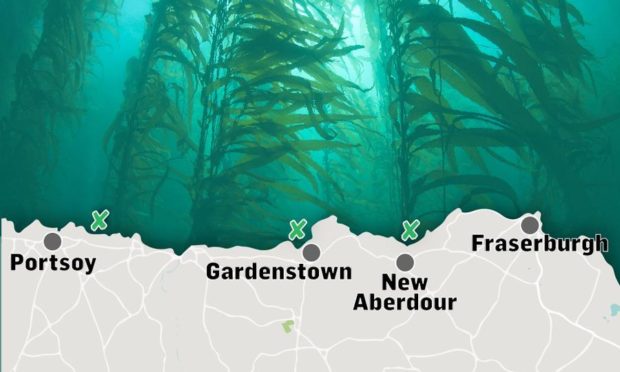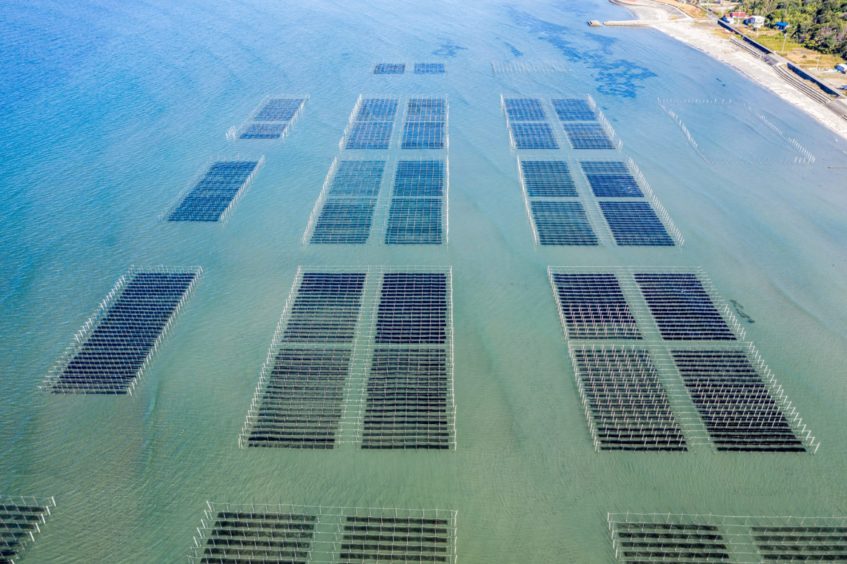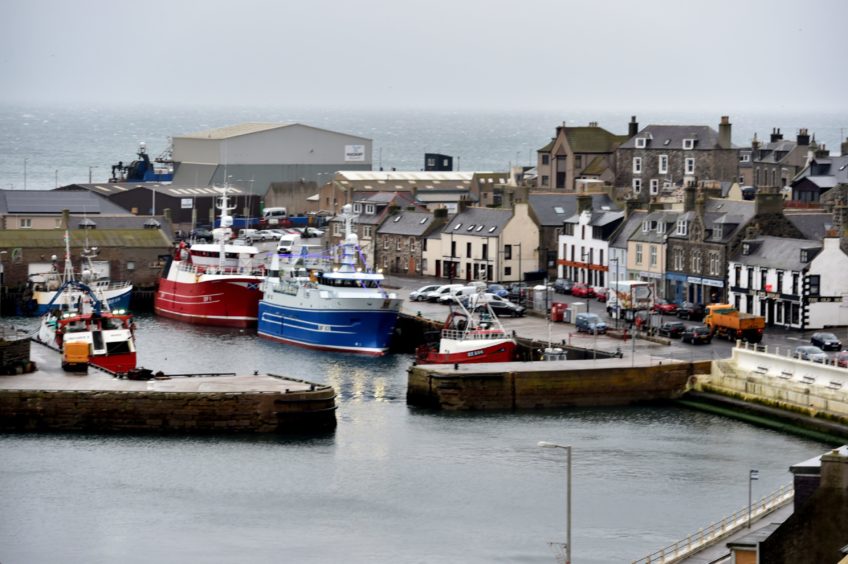North-east fishermen may find themselves farming seaweed in the future, as a study of the northern Aberdeenshire coastline has recommended it as a financially viable region for the growing industry.
Seaweed cultivation is a global market, and is crucial in the production of goods like food, cosmetics, packaging and animal feed.
Although there has long been wild seaweed harvesting in Scotland, particularly on the west coast, commercial-scale cultivation is becoming more popular.
‘Real excitement’ in Aberdeenshire business community
Despite farms already operating on the west coast of the country, where this year a festival celebrating seaweed was held, the more exposed conditions of the east coast have so far deterred potential operators from farming seaweed in the area.
However, a new study by Northern Light Consulting, commissioned by Aberdeenshire Council’s regeneration team, has determined the northern coast of the region from Fraserburgh to Portsoy has potential.
The 76-page report on the study concluded “there is a socially beneficial, technically feasible, and commercially viable opportunity for seaweed cultivation to be carried out in the Aberdeenshire area”.
And the council says there is “real excitement across the local business community about the potential of seaweed cultivation in the north-east”.
Three potential seaweed farming sites were identified in the study near Portsoy, Gardenstown and Aberdour Bay.
The farm designs would consist of moorings and long lines, supported by buoys, for seaweed to grow from.
When assessing their viability, the consultants took into account factors like water quality, existing commercial operations, existing infrastructure and protected species in each area.
The study recommended that a “small-scale trial with industry and farming partners in place” be established.
Who could operate or benefit from Aberdeenshire seaweed farming?
Northern Light believes “the most obvious industry sector that could diversify into the farming of seaweed would be inshore fishermen”.
The consultant’s study said that “local fishermen know the area, have relevant skills, they know the sea conditions”, and have access to the likes of vessels, safety equipment and berthing required to maintain the farms out at sea during the growing seasons.
And the report points out another “attractive benefit” to the Aberdeenshire fishing industry, in that the seaweed growing season is the off-season for creel, mackerel and squid fishing.
Northern Light has already spoken to a number of local operators about the potential, including creel and squid fishers.
The report said there has been a “keen interest from respondents” so far.
The potential for the processing industry to benefit was also highlighted.
“Several fish processors in the area may be interested in the potential opportunity for diversification,” the report added.
The consultancy also highlighted that Aberdeenshire has “much better links to market than many west coast operations”, and there “could be an opportunity to create a processing hub”.
Macduff Harbour was earmarked as “the most attractive” location for such a “hub”.
Another beneficiary could be local ecosystems and the planet’s climate, as seaweed farms can create habitats for sea life, and absorb harmful carbon dioxide.
What happens next?
A meeting for anyone interested in the potential of Aberdeenshire seaweed farming will be held in Macduff in the near future, however no date has yet been set.
The council will also be looking to secure grant funding to perform a small-scale trial, as recommended by the Northern Light study.
Christine Webster, regeneration and towns centre manager for Aberdeenshire Council, said: “There continues to be real excitement across the local business community about the potential of seaweed cultivation in the north-east.
“It’s an opportunity which could really add value to our food and drink sector, whilst also contributing to reducing carbon emissions in so many ways.”
Anyone who wants to attend the Macduff meeting can email jamie.wilkinson@aberdeenshire.gov.uk or call 01467 537377.


